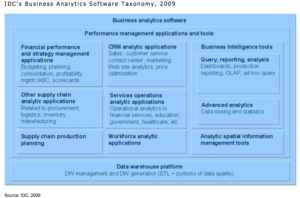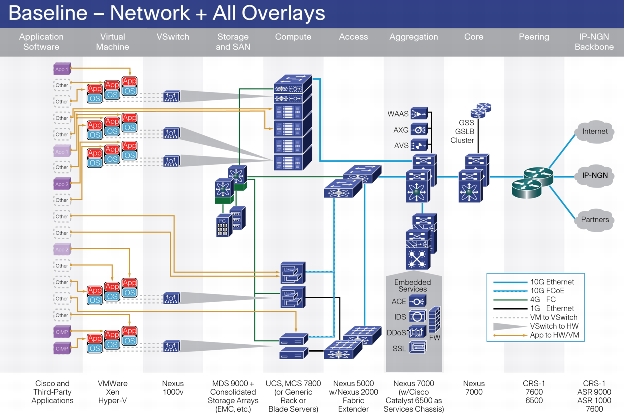E2.0 – An Executives’ Holy Grail?

The market changes constantly….new competition; old rivals offering new functionality or new marketing spins; customers’ needs changing. Couple this with internal management challenges; board, shareholder, and/or investor pressures. Being an executive is only getting harder with what I’ll refer to as information overload.
How do executives keep an efficient eye on both external and internal metrics that count and manage their enterprise data? Is this Enterprise 2.0 or E2.0?
I envision that the first thing I see when I start my day, is an internal view of the entire company…across every functional area, every line of business. Combine this with an external view of the market in which the company operates – an “executive dashboard” if you will. But it has to be more than just reporting – it must pull together all the enterprise business analytics needed by execs. Make this web-based and available from the office, my laptop, my home computer, and even my mobile phone.
As the CEO, I might have an area of the dashboard where I can shoot a live video (from my webcam) or upload a more polished video to show to executives, key individuals, or all employee’s….a morning video-cast for all to wake up to.
I can envision columns of information that are organized to provide me status of key groups within the organization and provide direct links to their team leads and internal communities in general. Major applications used by each group would also be provided in one centralized “mashup”.

Integration with the major enterprise applications including: teleconference (e.g. Cisco WebEx), email (e.g. MSFT Exchange), CRM (e.g. Salesforce), and ERP (e.g. SAP) packages is an absolute given.
At my last SaaS company, as the CEO, I (and my staff) maintained the following information / dashboards…it seemed almost as difficult as flying a helicopter just to get everything into one place, let alone updates, and the content right:
- Board of Directors (Investor) Company Dashboard
- Sales / Biz Dev Pipeline Dashboard (Direct & Channel)
- Financial Dashboard (Cashflow, Op Budget, P&L, BS)
- Operational Dashboard (platform/CDN/infrastructure spend)
- Platform Dashboard (SaaS customer usage statistics)
- Online Lead-Gen Dashboard (signups)
- Marketing Dashboard (campaigns, PR)

Information Overload? - Monetization Dashboard (we managed an ad-network)
- Customer Support Dashboard (free to paid conversion focus, satisfaction, profiling)
- Content Dashboard (use of digital content, content campaigns)
- Engineering Dashboard (development project status)
- Content Moderation Dashboard (outsourced platform cost)
- Product Strategy / Roadmap Dashboard (prioritized development)
This doesn’t even begin to include all the supporting documentation that you and your staff iterate on. Of course, you can comb the old Intranet hierarchies, your personal computer directories, your email folders, and the like….but it can become unmanageable (not just for you, but your staff).
Have any of you ever felt you had the enterprise under complete control? Or are you a victim of information overload like the rest of us?



